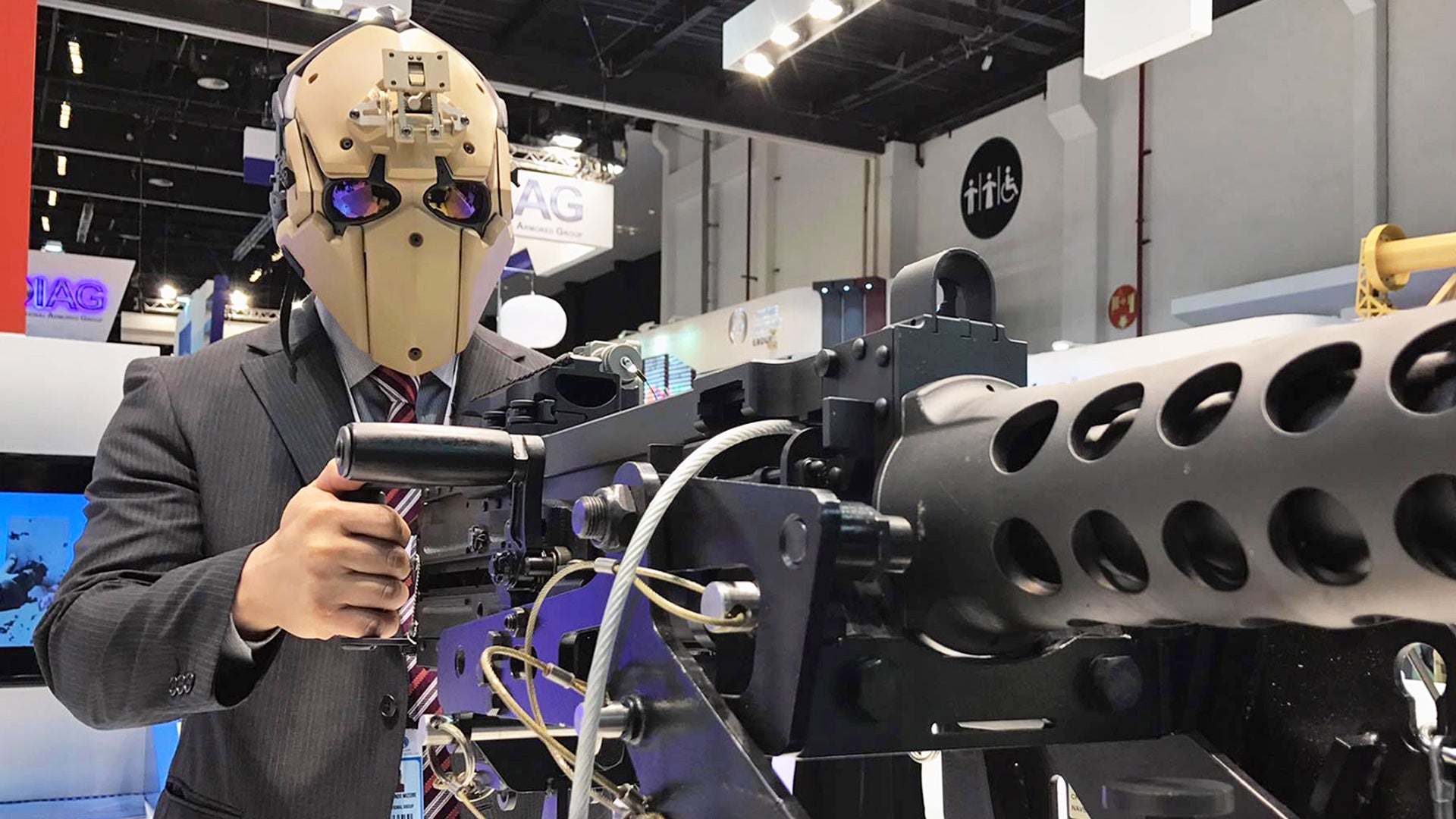It looks like it belongs in the latest science fiction action movie, and seems like it could be more at home on Kylo Ren’s head than on a real soldier’s, but this helmet is very much real. Japan’s Devtac, along with the Trust International Group, are working on a new modular ballistic headgear, dubbed Ronin II, aimed at giving special operations and special tactics units more protection, and more flexibility, than what their current headgear offers.
The markets for combat headgear, and especially maxillofacial shields, have exploded in recent years. The hockey-like helmets that special operators have worn for decades have given way to much more specialized cranial protection. Meanwhile, the ability to attach ballistic face shields to existing helmet, especially those worn by helicopter crews, have become the norm. (This has, incidentally, also led to some pretty surreal and sinister pieces of art.) Yet it seems most special operations soldiers still aren’t happy with their helmet choices.
Elaborate helmet systems have been in development with an eye on integrating wearable technologies, such as helmet-mounted displays and augmented reality glasses, and to lessen the chances that its wearer would experiencing traumatic brain injury during a blast from an IED. But even the most basic of these units remain bulky, like a motorcycle helmet, and It seems that for many special operations units, less is often more when it comes to headgear and other wearables. With this in mind, the need for a platform that offers enhanced protection and a high level of customization without the bulk is clearly there. This seems to be where relatively tiny Devtac is trying to find a niche, offering a new headgear that includes a high degree of ballistic protection (level 3A), not just for the head but also the face and eyes, in a relatively streamlined package.

,
Devtac’s Kevlar-reinforced Ronin helmet has been tested against cartridges up to 44 magnum—you can see the tests below—and the system can be easily altered on the fly. Plus, some of the pieces can be attached via neodymium magnets instead of small screws. For instance, an operator could put on individual solid cheek shields for high-risk operations such as when clearing buildings, and can easily remove them once operating in a lower threat environment. The removable cheek piece also allows for a far better weapon-to-cheek weld for the user’s strong side. Alternatively, a single piece wrap-around armored mandible shield can be attached for the best possible ballistic coverage. Also, different picatinny rails and slots to attach helmet-mounted displays, cameras, and night vision optics can be configured depending on the mission needs and available technology. The eye pieces are actively defogged using a small electronic fan system that is integrated directly into the helmet chassis.



The helmet system is supposed to feature a peripheral field of view of 160 degrees, which is fairly impressive, and is relatively lightweight considering the protection it supposedly provides. As to whether this thing is actually comfortable, functional, and tactically relevant, I have no idea, but it was one of the stars of IDEX 2017—a large arms trade show in Dubai—and many special operations and special tactics units are said to have ordered samples for testing. What I do know is that it looks scary as hell, so it has that going for it. Some will likely malign what seems to be Devtac’s roots in the airsoft community, although they would be foolish to do so. Often, meaningful defense innovations come from outside the traditional “big defense” R&D umbrella, and for something as unglamorous and niche as the special operations helmet market, who knows, Devtac may have a winner on their hands eventually.
Contact the author: Tyler@thedrive.com
*Photos via Devtac’s facebook page.
